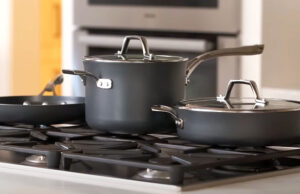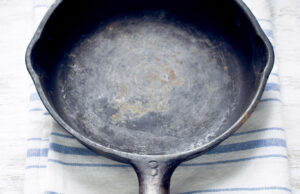Baking can be a fun and rewarding activity, but it’s also a bit tricky sometimes. One question that often pops up is whether it’s safe to open the oven door while baking. We’ve all been there, wondering if we can sneak a peek at our creations or if doing so might ruin the whole process. If you’re curious about this, you’ve come to the right place. In this ultimate guide, we’ll answer all your questions and help you bake like a pro!
How Opening the Oven Affects the Baking Process
When you’re baking, opening the oven door can have a significant impact on how your food cooks. Understanding the science behind this is crucial to ensure you get the perfect results every time.
The Importance of Heat Consistency
Ovens work by maintaining a consistent temperature to ensure that your food cooks evenly. When you open the door, hot air escapes, and the temperature inside drops. This sudden drop in temperature can cause your baking to slow down or even ruin it altogether, especially for recipes that rely on precise temperature control, like cakes, soufflés, or pastries.
Imagine you’re baking a cake, and you open the door to check on it. That sudden temperature change can cause your cake to collapse. This is particularly true for delicate baked goods that rely on stable heat to rise properly. Similarly, for cookies, the sudden change in temperature can affect how they spread or bake evenly.
How Long You Keep the Door Open Matters
It’s not just about whether you open the oven door; it’s also about how long you keep it open. The longer the door stays open, the more heat escapes, making it harder to maintain the proper temperature. If you only open the door for a second or two, the impact might be minimal. However, if you leave it open for a minute or more, the temperature inside can drop significantly, affecting the baking process.
If you find yourself needing to check on your food, try to keep the door open for as little time as possible. This way, you can minimize any disruption to the baking process.
How Different Foods Are Affected
Different types of food react to the opening of the oven door in different ways. Let’s break it down:
- Cakes and Cupcakes: As mentioned, cakes are particularly sensitive to temperature changes. If you open the oven door too early, your cake might collapse. It’s best to avoid opening the door until the cake has set, usually after about 2/3 of the baking time has passed.
- Cookies: Cookies are a bit more forgiving when it comes to opening the oven. However, if you open the door too often, it can cause uneven baking. It’s better to open the door quickly and check from a distance if possible.
- Bread and Pastries: Bread and pastries rely heavily on the initial heat to rise. Opening the door too early can cause them to deflate. Try to resist checking on bread or pastries until they’ve had a good amount of time to bake.
- Roasts and Casseroles: For larger dishes like roasts or casseroles, opening the door usually won’t ruin the dish, but it may extend the cooking time as the oven needs to reheat.
Understanding how each type of food reacts will help you make informed decisions about when to open the oven.
The Risk of Overbaking
Another problem that comes from opening the oven door too often is overbaking. When you open the oven door, heat escapes, and the oven works harder to get back to the right temperature. This can result in overcooked food, especially for delicate items like cakes or soufflés, which need precise baking times.
Overbaking can lead to dry, hard, or burnt results, ruining all your hard work. To avoid this, try to keep oven door openings to a minimum.
When is it Okay to Open the Oven Door?
While opening the oven door can affect the baking process, there are certain situations where it’s okay to check on your food. It’s all about knowing when it’s safe to do so without causing too much disruption.
After the Food Has Set
One general rule of thumb is to wait until the food has set before you open the oven door. For cakes, cupcakes, or soufflés, this usually means waiting about two-thirds of the way through the baking time. By this point, the food has begun to firm up and is less likely to collapse from the sudden change in temperature.
For other baked goods like cookies or bread, it might be okay to open the oven door earlier. However, it’s important to limit how often you do so, as too many checks can still impact the final result.
When Using a Recipe with Specific Instructions
Some recipes may call for checking on your food during the baking process, especially when you need to make adjustments. For example, you might be instructed to rotate a pan halfway through cooking, or you may need to add toppings that require a quick peek at the dish. In these cases, it’s okay to open the oven door, but try to do it quickly.
If a recipe doesn’t specifically mention opening the door, it’s better to err on the side of caution and avoid doing so unless absolutely necessary.
When You Smell Something Burning
Sometimes, the need to open the oven door comes from the smell of something burning. If you notice a burning smell, it’s important to check your food to make sure it’s not overcooked or at risk of catching fire. However, in most cases, you can still prevent overbaking by turning down the heat a little or adjusting the cooking time.
If this happens frequently, it might be a good idea to check the oven’s temperature settings. In some cases, an oven might not be calibrated properly, causing it to run hotter than it should.
When You Have an Oven Window
If your oven has a window, it’s tempting to look through it instead of opening the door. This is actually a great way to check your food without disrupting the heat inside. While it’s still possible to affect the temperature slightly by looking through the window, the impact is usually much less than opening the door fully. If you have this feature, use it to your advantage whenever possible!
When You’re Baking Multiple Items
If you’re baking several items at once, such as different trays of cookies or cakes, you may need to open the door briefly to rotate or rearrange them. Doing this quickly can minimize the temperature drop and help ensure even baking. Just be mindful that the more often you open the door, the longer it will take for the oven to get back to the correct temperature.
Final Thoughts
I hope this article helped you understand the do’s and don’ts of opening the oven door while baking. With the right approach, you can get the best results without compromising your delicious creations. Happy baking!
Frequently Asked Questions
Is it safe to open the oven door while baking a cake?
Yes, it’s generally safe to open the oven door when baking a cake, but avoid doing so early in the baking process. Wait until the cake has set before checking it.
Can opening the oven door cause a cake to fall?
Yes, opening the oven door too soon can cause a cake to fall. The temperature drop can disrupt the cake’s rise, leading to collapse or uneven baking.
Do I need to open the oven door to check on cookies?
You can open the oven door to check on cookies, but try to do it quickly to avoid a temperature drop. Over-checking can affect how they bake.
Can I open the oven door while baking bread?
It’s best to avoid opening the oven door while baking bread, especially during the first stages when it needs heat to rise. Opening the door too early can lead to a deflated loaf.
Is it okay to open the oven door while roasting vegetables?
Yes, it’s fine to open the oven door while roasting vegetables. Roasts usually have a longer cooking time and are less sensitive to slight temperature changes.
Can I rotate my baking tray while it’s in the oven?
Yes, it’s okay to rotate the baking tray, but be quick about it to minimize the heat loss from opening the oven door. Try not to do it too often.
Do I need to check on my casserole while it’s baking?
It’s generally okay to open the oven door to check on a casserole, but try not to do it too often. Opening the door once or twice is usually enough.
Is it safe to open the oven door if I’m baking a soufflé?
It’s not recommended to open the oven door while baking a soufflé. The temperature change can cause it to collapse, ruining its delicate structure.



